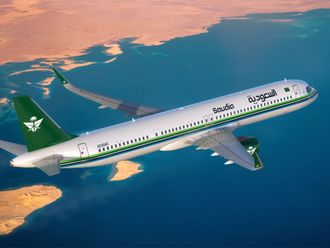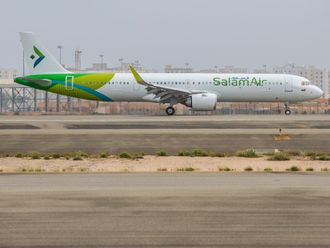
Dubai: Dubai International Airport has surpassed John F. Kennedy (JFK) International Airport in New York in terms of capacity, for the first time, according to the latest report by OAG, the US-based global leader in aviation intelligence.
“For the first time Dubai's capacity has surpassed the capacity constrained New York's JFK,” the report said.
In its monthly Frequency and Capacity Trend Statistics (FACTS) report, OAG reports strong air service growth to the Middle East, increasing 11 per cent, overall, in September.
“Dubai International Airport (DXB) is a strong contributor to that growth, increasing 14 per cent in seat capacity, year over year,” the report, published today, said.
September seat capacity and frequency in the Middle East increased 11 per cent, both within and to and from the region.
“Total seat capacity to and from the region increased to 11.65 million, from 10.5 million a year ago; and the total number of seats available within the region grew to 7.02 million from 6.31 million,” OAG statistics show.
Dubai Government has been investing more than Dh15 billion in expanding the capacity at Dubai International Airport, which is in its final leg that will raise its passenger handling capacity to 80 million. The airport, which opened Emirates Terminal 3 in October 2008, will open the fourth terminal in 2012.
“Dubai International Airport is home to a growing airline, which is supported by a government interested in opening international markets, catapulting the airport into the position of being a leading international airport," said Peter von Moltke, Chief Executive Officer, UBM Aviation, parent company of OAG.
However, one of the key drivers of Dubai’s success in the aviation sector has been driven by its home-grown airline – Emirates.
“Emirates key focus has been to pluck capacity from every region it can fly to, filter it through Dubai and connect passengers out of the city to any destination on the planet,” Saj Ahmad, an aerospace/airline analyst with FBE Aerospace based in the UK, told Gulf News.
“The simple fact is that the airline has a superb product (and you don’t need a Skytrax rating for that) and it has a management team so perfectly in tune with the needs of the business, even an orchestra symphony looks a muddle in comparison".
Global aviation
Worldwide, seat capacity increased 8 per cent in September to 319.48 million seats, an increase of 22.56 million seats, it said.
Frequency is scheduled to grow 6 per cent, to a total 2.55 million flights, an increase of 151,257 monthly flights. Air service growth is reflected in every region of the world, again this month
Scheduled seat capacity grew within North America for a second consecutive month, continuing growth that hasn't been experienced since 2007.
Seat capacity increased 3 per cent over September 2009, to a total of 74.32 million seats, and frequency increased 2 per cent for a total of 819,347 scheduled flights.
Seat capacity to and from North America, which recently had been stronger than within the region, grew 6 per cent to 16.42 million in September.
Air service to and from Europe remains strong, with capacity increasing 10 per cent, to a total of 24.57 million seats; and flights by 11 per cent, with 108,888.
Much of this growth comes from increased seats and flights to the Middle East and Asia, including flights to and from Abu Dhabi (21%), Doha (28%) and Tokyo (12%).
Traffic also grew within Europe with a 7 per cent increase in seat capacity and a 5 per cent increase in the number of fights to a total of 77.9 million seats and 623,579 flights.











